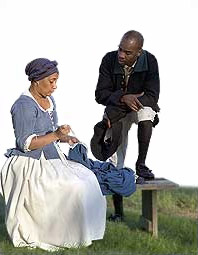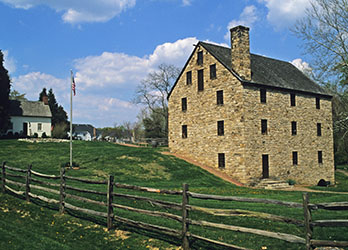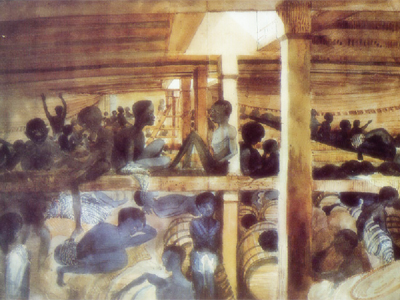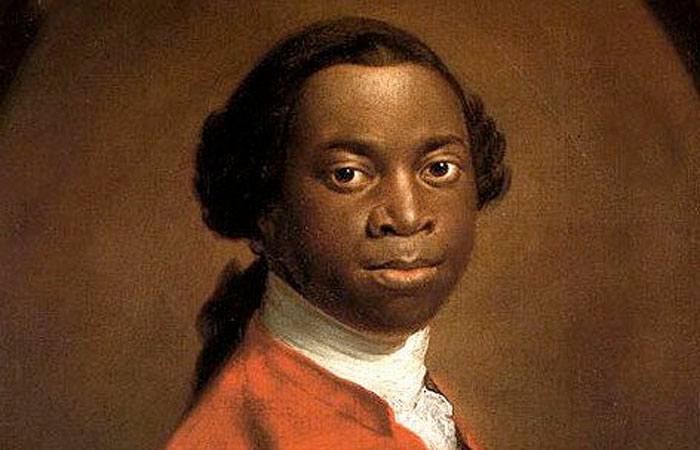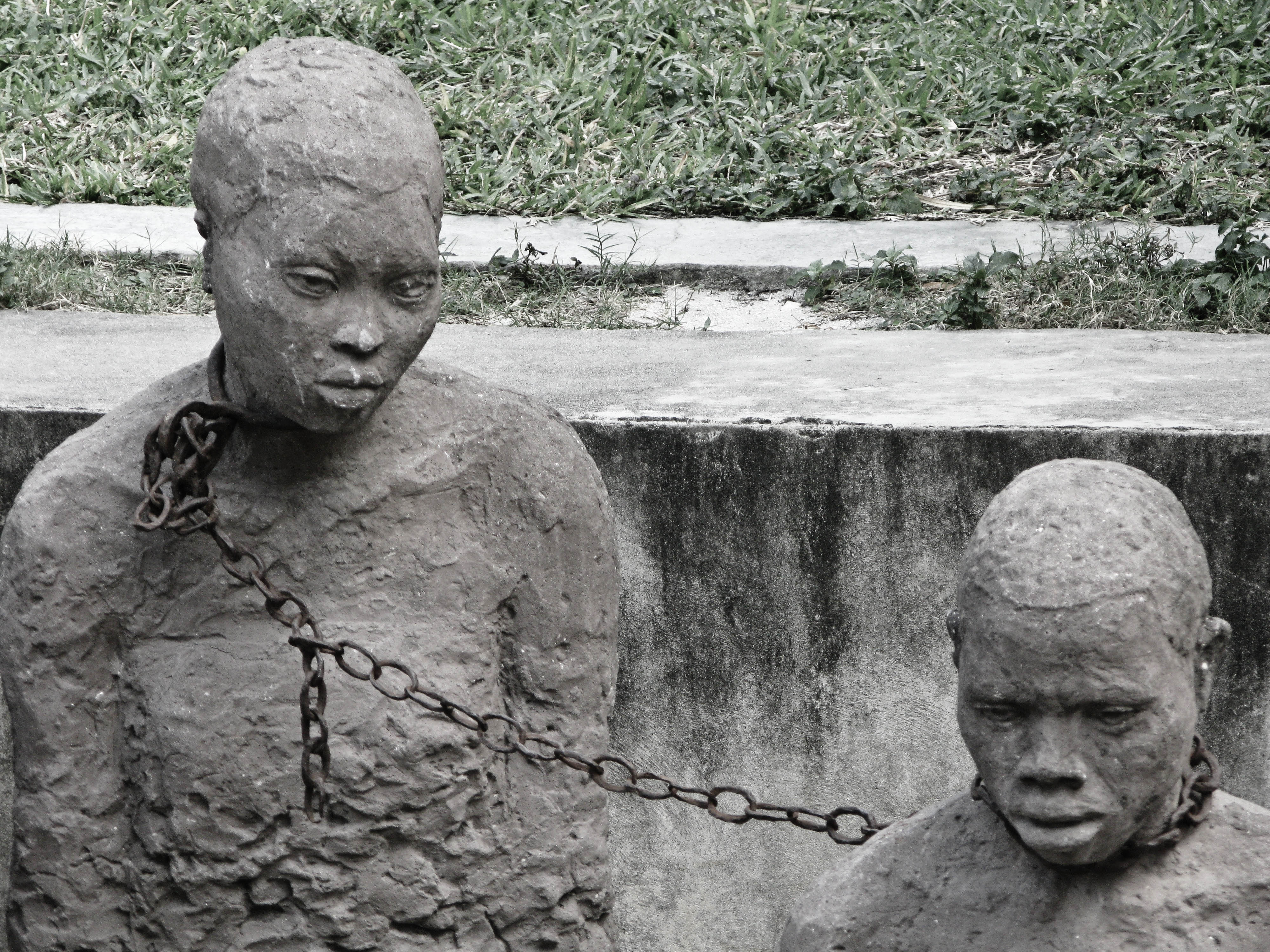
"The 1943 Detroit race riots," by Vivian M. Baulch and Patricia Zacharias of the Detroit News on February 11, 1999: Recruiters toured the South convincing whites and blacks to head north with promises of high wages in the new war factories. They arrived in such numbers that it was impossible to house them all.
Blacks who believed they were heading to a promised land found a northern bigotry every bit as pervasive and virulent as what they thought they had left behind in the deep south. And southern whites brought their own traditional prejudices with them as both races migrated northward.

The influx of newcomers strained not only housing, but transportation, education and recreational facilities as well. Wartime residents of Detroit endured long lines everywhere, at bus stops, grocery stores, and even at newsstands where they hoped for the chance to be first answering classified ads offering rooms for rent. Even though the city enjoyed full employment, it suffered the many discomforts of wartime rationing. Child-care programs were nonexistent, with grandma the only hope -- provided she wasn't already working at a defense plant.
An injured driver from Busy Bee Moving Company is detained by police after he attempted to drive through a picket line of angry white neighbors near the Sojourner Housing Project.

The prevailing 48-hour work week put lots of money into defense workers pockets, but there were few places to spend it and little to spend it on. Food and housing were either rationed or unavailable. Detroit's nickname was the "Arsenal of Democracy" but stressed-out residents often referred to it as the "arsehole" of democracy. Workers disgruntled by the long commute out to the Willow Run plane factory dubbed that operation "Will it Run."
Police try to disburse a crowd of blacks at Sojourner Truth Housing Project Feb. 28, 1942.
Times were tough for all, but for the Negro community, times were even tougher.

Blacks were excluded from all public housing except the Brewster projects. Many lived in homes without indoor plumbing, yet they paid rent two to three times higher than families in white districts. Blacks were also confronted with a segregated military, discrimination in public accommodations, and unfair treatment by police.
The summer of 1941 saw an epidemic of street corner fights involving blacks and Polish youths who were terrorizing black neighborhoods in Detroit and Hamtramck.
Early in June 1943, 25,000 Packard plant workers, who produced engines for bombers and PT boats, stopped work in protest of the promotion of three blacks. A handful of agitators whipped up animosity against the promotions. During the strike a voice outside the plant reportedly shouted, "I'd rather see Hitler and Hirohito win than work beside a nigger on the assembly line."
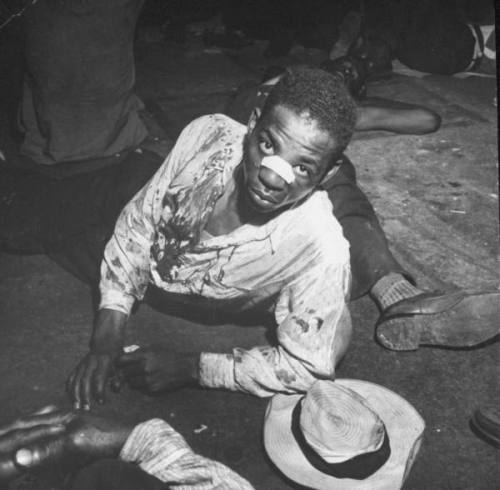
Whites resentful over working next to blacks caused many stoppages and slowdowns. Harold Zeck, a former Packard defense worker, recalls the time when a group of women engine workers tried to get the men on the assembly line to walk off the job to protest black female workers using the white restrooms. "They think their fannies are as good as ours," screamed one woman. The protest fizzled when the men refused to walk out.
An armed black homeowner protects his property and family from roving crowds near the Sojourner neighborhood.
Unions did their best to keep production figures up and to keep the lid on confrontations, even though the Ku Klux Klan and the feared Black Legion were highly organized and visible in the plants.
Overcrowded housing combined with government rent control further aggravated racial problems in the city. Once spacious flats were divided and then subdivided into tiny rooms to rent. Many living under these oppressive conditions relied on hopes for the future to get them through the long tiring days.
Even before the attack on Pearl Harbor, the federal government was concerned about providing housing for the workers who were beginning to pour into the area. On June 4, 1941, the Detroit Housing Commission approved two sites for defense housing projects--one for whites, one for blacks. The site originally selected by the commission for black workers was in a predominantly black area. But the federal government chose a site at Nevada and Fenelon streets, a white neighborhood.
The Rev. Horace White, the only black member of the Housing Commission, stated, "As much as I disagree with the site selection, the housing shortage in Detroit is so acute, particularly among Negroes, that I feel we should cooperate."

Detroit police arrest a group of blacks when one was found to be carrying a knife during the Febuary 1942 disturbances.
On Sept. 29, the project was named Sojourner Truth, in memory of the female Negro leader and poet of Civil War days. Despite being completed on Dec. 15, no tenants moved into the homes because of mounting opposition from the white neighborhood.
On Jan. 20, 1942, Washington informed the Housing Commission that the Sojourner Truth project would be for whites and another site would be selected for black workers. But when a suitable site for blacks could not be found, Washington housing authorities agreed to allow blacks into the finished homes.
The first black tenants, rent paid and leases signed, arrived at 9 a.m. but left the area fearing trouble. It wasn't long in coming. Fighting began when two blacks in a car attempted to run through the picket line. Clashes between white and black groups continued into the afternoon when 16 mounted police attempted to break up the fighting. Tear gas and shotgun shell were flying through the air. Officials announced an indefinite postponement of the move.
Detroit newspapers, union leaders, and many other whites campaigned for the government to allow the black workers to move into the homes. The families, having given up whatever shelter they had in anticipation of their new homes, were left with no place to go and were temporarily housed with other families in the Brewster Homes and other sites.

Finally, despite the simmering resentment, black families moved into the project at the end of April. Detroit Mayor Edward Jeffries ordered Detroit police and state troops to keep the peace during the move.
Walter Jackson, a 35-year-old defense worker, his wife and five children were the first to move in. "We are here now and let the bad luck happen," said Jackson. "I have only got one time to die and I'd just as soon die here."
Jackson, a short, wiry 130-pound former UAW-CIO shop steward, had taken an active part in the auto sit-down strikes of 1937.
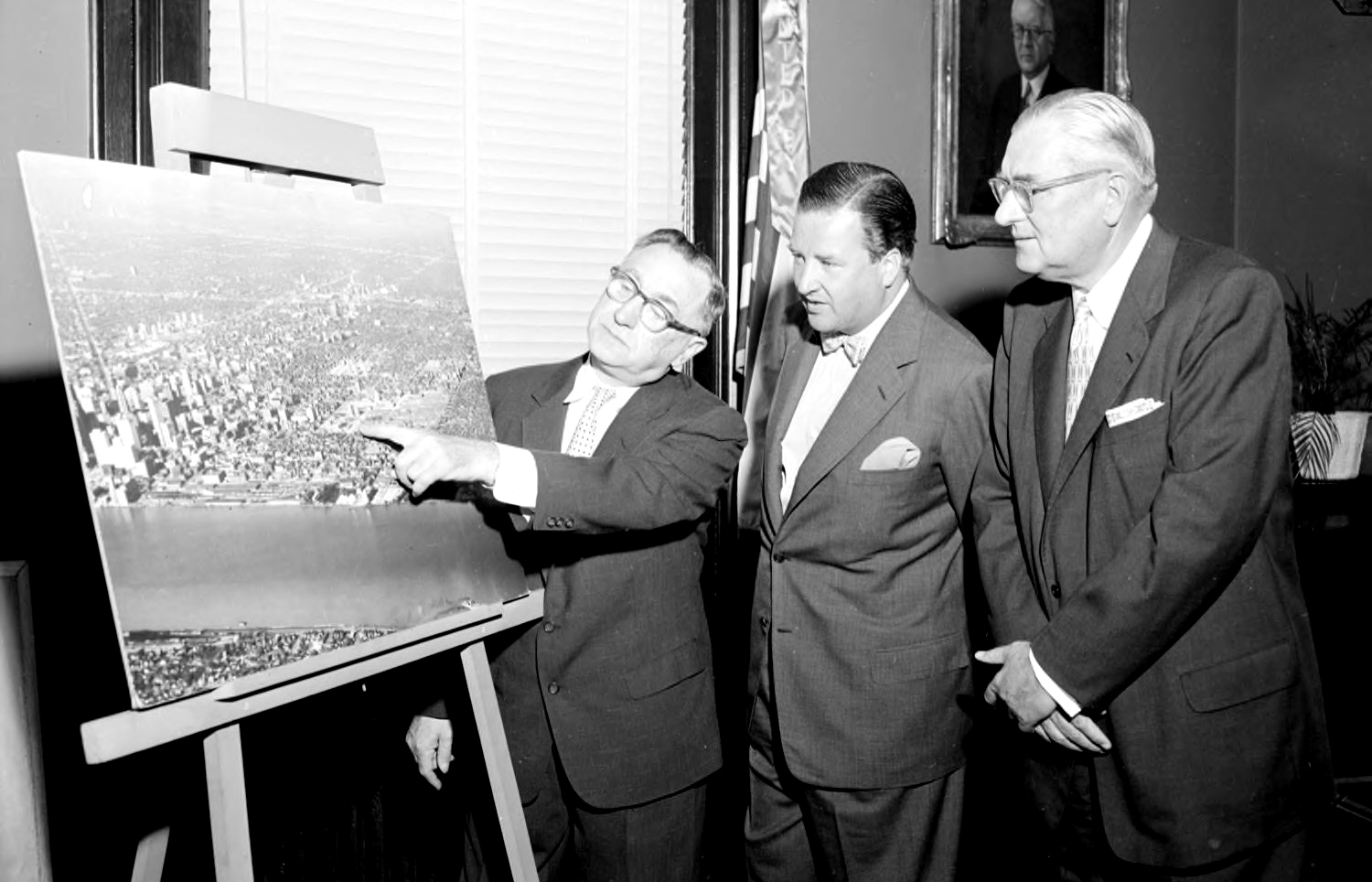
Detroit Mayor Edward Jeffries
White neighbors on the project's eastern boundary quizzed each passing white: "Which side are you on?" A score of white women, some pushing baby carriages, waved American flags and paraded briefly along Conley Avenue north of the project. They booed when the Rev. White appeared to show support for the new neighbors.
Although the Sojourner Truth riots resulted in no fatalities, the trouble was a warning of what was to come.
By 1943 the number of blacks in Detroit had doubled since 1933 to 200,000 and racial tensions in the city grew accordingly. To protest unfair conditions, some blacks began a "bumping campaign" -- walking into whites on the streets and bumping them off the sidewalks, or nudging them in elevators.
Local and national media anticipated trouble. Life Magazine called the situation dynamite. On June 20, blacks and whites clashed in minor skirmishes on Belle Isle. Two young blacks, angered that they had been ejected from Eastwood Park some five days previously, had gone to Belle Isle to try to even the score. Police began to search cars of blacks crossing to Belle Isle but they did not search cars driven by whites. Fighting on the island began around 10 p.m. and police declared it under control by midnight. More than 200 blacks and whites had participated in the free-for-all.

Rumors began to fly.
Leo Tipton and Charles (Little Willie) Lyons told a black crowd at the Forest Social Club, 700 Forest, that whites had thrown a black woman and her baby off the Belle Isle Bridge. More than 500 angry and fearful patrons swarmed onto the street. The angry crowd moved to Woodward, near Paradise Valley, breaking windows and looting stores.
Nearby, just west of Woodward in an area inhabited by southern whites, another rumor swept the neighborhood--blacks had raped and murdered a white woman on the Belle Isle Bridge.

An angry mob of whites spilled onto Woodward near the Roxy Theater around 4 a.m., beating blacks as they were getting off street cars.
At least six Detroit policemen were shot in the melees, and another 75 were injured.
Woodward was the dividing line between the roving black and white gangs. Whites took over Woodward up to Vernor and overturned and burned 20 cars belonging to blacks, looting stores as they went. The virtual guerrilla warfare overwhelmed the 2,000 city police officers and 150 state police troopers. A crowd of 100,000 spectators gathered near Grand Circus Park looking for something to watch.
A white mob moves up Woodward looking for trouble in the early hours of the 1943 riot. At least two overturned cars can be seen in the background.

The first death was a white pedestrian killed by a taxicab. Later four white youths shot and killed Moses Kiska, 58, a black man who was waiting for a bus at Mack and Chene.
The white Detroit police officers who patrolled Paradise Valley considered all blacks on Hastings Street looters. They reportedly told bystanders to "run and not look back." Some were shot in the back running from police.

Disregarding police warnings, a white doctor, Joseph De Horatiis, entered a black neighborhood on a house call. Within moments he was hit with a rock, pulled from his car and beaten to death by rioters. A monument to the Italian physician was dedicated in 1946 at East Grand and Gratiot.
A black man coming off a bus on Woodward was beaten by a white mob in front of four policemen who made no effort to protect the victim or arrest the whites.

Mayor Edward Jeffries Jr. and Governor Harry Kelly asked President Roosevelt for help in restoring order. Federal troops in armored cars and jeeps with automatic weapons moved down Woodward. The sight of the troops with their overwhelming firepower cooled the fervor of the rioters and the mobs began to melt away.
The toll was appalling. The 36 hours of rioting claimed 34 lives, 25 of them black. More than 1,800 were arrested for looting and other incidents, the vast majority black. Thirteen murders remained unsolved.
A white mob overturns a car belonging to a black man on Woodward. The whites running at right are chasing the driver.

Five black men received 80-day jail terms for disturbing the peace. Two were acquitted. Twenty-eight were charged and convicted on various charges including concealed weapons, destruction of property, assault, larceny. There was little arson, due to gasoline rationing, but more than a few cars were overturned and torched.
Tipton and Little, the two blacks linked to the original rumor, were sentenced to two-to-five years for inciting a riot.
The city's white police force was criticized for its "restraint" in dealing with the black rioters, despite the fact that only blacks -- 17 of them -- were killed by police.
Police Commissioner John H. Witherspoon defended his force and his refusal to issue shoot-to-kill orders, saying hundreds could have been killed. "All of those killed would not have been hoodlums or murderers--many would have been victims of mob psychology or innocent bystanders. If a shoot-to-kill policy was right, my judgment was wrong."
Mayor Jeffries praised the police and said he was "rapidly losing my patience with those Negro leaders who insist that their people do not and will not trust policemen." The mayor asked the Rev. White to search for 200 qualified Negroes to join the police force.
Thurgood Marshall, then with the NAACP, assailed the city's handling of the riot. He charged that police unfairly targeted blacks while turning their backs on white atrocities. He said 85 percent of those arrested were black while whites overturned and burned cars in front of the Roxy Theater with impunity while police watched.

"This weak-kneed policy of the police commissioner coupled with the anti-Negro attitude of many members of the force helped to make a riot inevitable," Marshall said.
Despite Detroit's history of problems, the Seal of the City of Detroit offers hopeful and timeless mottoes: "Speramus meliora" (We hope for better things) and "Resurget Cineribus" (It will rise from the ashes.) [source: Detroit News, 1999]

















